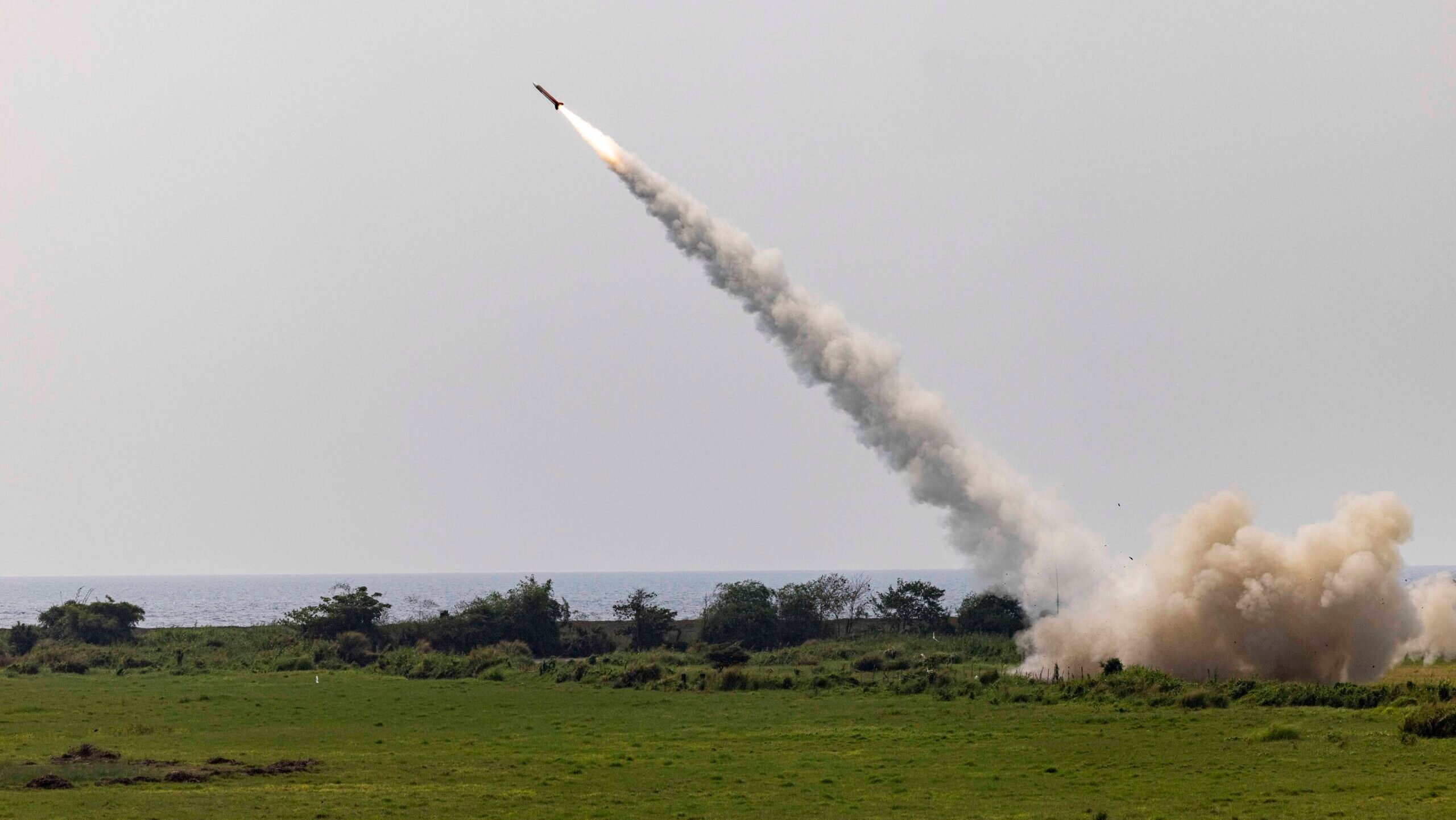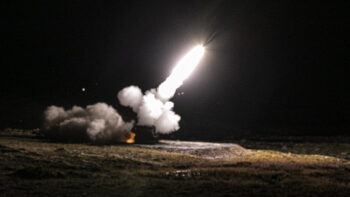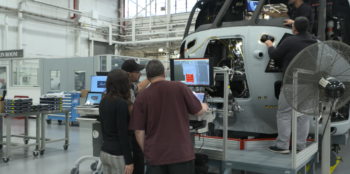
A U.S. Army MIM-104 Patriot surface-to-air missile system is fired for a coastal air defense event during Balikatan 23 at the Naval Education, Training and Doctrine Command, Philippines, April 25, 2023. (Photo: US Marine Corps)
BELFAST — US Defense Secretary Lloyd Austin announced a new $6 billion weapons package for Ukraine today, the largest single American commitment yet, but the good news for Kyiv was tempered by the acknowledged failure so far of the international community to provide much-needed full Patriot batteries.
The latest weapons package does include Patriot interceptor missiles, as well as National Advanced Surface-to-Air Missile System interceptors, counter drone systems, “significant amounts” of artillery ammunition and air-to-ground missiles, noted Austin.
All equipment is to be ordered from industry, not drawn from US stocks — meaning it could take years for the weapons to arrive in Ukraine.
The new package, funded under Washington’s Ukraine Security Assistance Initiative (USAI), is in addition to a $1 billion presidential drawdown package, approved by the DoD on Wednesday. Systems in that package should be more readily available to Ukrainian forces.
Austin said the $6 billion pledge demonstrated “America’s enduring commitment to Ukraine’s defense.”
But he admitted that despite Ukraine President Volodymyr Zelenskyy’s plea for international supply partners to provide seven Patriot systems, the US-led Ukraine Defense Contact Group, which met virtually today on the second anniversary of its first meeting, did not reach an agreement to satisfied such demand.
“In terms of Patriots, and what they [other nations] might be able to do going forward is left to be seen, but I can tell you that we continue to work on this and in a very earnest manner,” said Austin. “All the countries that have Patriots certainly value that capability, but I think going forward, we’ll be able to, hopefully work with a number of countries to put together additional Patriot capability.”
He warned against the weapon being seen as a “silver bullet,” arguing that layered integrated air and missile defense capabilities are whats needed to “turn the tide” of war in Ukraine’s favor.
His comments come after reports emerged this week that Spain and Greece have both ruled out transferring the Raytheon- and Lockheed Martin-made air defense system to Ukraine, as Kyiv continues to suffer attacks against critical infrastructure.
Elsewhere in the press conference Austin and Gen. CQ. Brown, US Chairman of the Joint Chiefs of Staff, declined to confirm or deny a report from the Associated Press that US Abrams M1A1 battle tanks provided to Ukraine have been withdrawn from the frontline, in part, because of the ease of Russian drones detecting them.
“I’ll defer to the Ukrainian’s on how they use their Abrams,” Brown said. “But I will highlight the use of first person view drones by both sides and the innovation that has occurred in this conflict … there’s something that I think we can all learn from.”
After 793 days of war, “Ukraine is still in the fight and still showing incredible skill, courage and resilience,” explained Austin, praising the Ukraine Defense Contact Group for so far committing $95 billion in all to stop Russia’s aggression.
The majority of counter-UAS systems, 155mm artillery systems, tanks, armored personnel carriers and infantry fighting vehicles, have been supplied by the group, he added.
Additionally, Austin confirmed that all eight Ukraine Capability Coalitions, originally established in February, are “up and running.” They were launched so partner nations could agree on and co-ordinate supplies of weaponry including aircraft, air defense, artillery, drones and demining equipment. Each one is typically led by two to three partner nations.
Aloha: Fixes ongoing, then Army’s new watercraft prototype is Hawaii bound for testing
“Everything that we can knock off that list we will do in the archipelago…because that allows us to do the tests in the environment that the vessel will operate in ultimately,” said Maj. Gen. Jered Helwig.


























